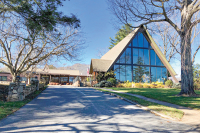Conservation makes strides in the mountains
Blue Ridge Forever, a coalition of nine land trusts in the mountains, will exceed its five-year goal of protecting 50,000 acres in Western North Carolina. The land trusts expect to surpass the target by as much as 8,000 acres by year’s end.
“The land trusts had to overcome untold obstacles to reach this goal, working quickly to protect the places we all love in Western North Carolina before they were lost to development,” said Phyllis Stiles, campaign director for Blue Ridge Forever. “But, whenever the goal seemed too lofty, our treasured mountains, forests, farmland and streams inspired us to press on.”
When the campaign was launched, the national recession wasn’t on the horizon.
“That was unexpected and made it a lot harder. A lot of money that would have been used for land conservation disappeared,” said Gary Wein, director of the Highlands-Cashiers Land Trust.
Meanwhile, when real estate developments faltered, landowners and developers facing foreclosures offered up their property for conservation at reduced prices. Opportunity was abundant, but the funding wasn’t there to take advantage of it, Wein said.
“Money has been hard to come by,” he said.
Related Items
Plus, what grants and donations were available were earmarked for projects themselves, leaving little for daily operations and overhead of running the land trusts.
The land trusts collectively saved 350 tracts of land from development over the past five years, sometimes by outright purchase of the tracts and other times by securing a voluntary conservation agreement from the landowner.
Some of the saved tracts are wild, while others are farmlands, which will continue being farmed without threat of development.
“Once a farm becomes a housing development it will likely never again be worked. The protection of good agricultural lands is vital to the future of farming in our mountains and in our state,” said Bill Yarborough, special assistant to N.C. Commissioner of Agriculture.
While the campaign’s success is a critical milestone, Stiles said the work is far from over. Many important places in the Blue Ridge Mountains are still at risk of development.
Public funding from state and federal sources came to $110 million, and private donations totaled $32.5 million. Landowners contributed $196 million by donating property outright or at a reduced market value.
“Without all those land owners donating conservation easements, we never would have done it. It takes a village to conserve land,” Wein said.









